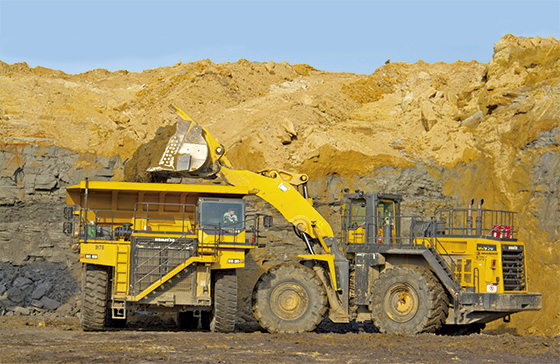Culture of competitiveness

In a time of challenge, Brazilian mining companies bet in process improvement and in advanced technologies to increase the productivity of their operations
As occurs in other productive areas of the national economy, currently the most pronounced words in the mining industry are care, planning and mainly creation of alternatives to overcome the turbulent moment that the country is going through.
And this had not to be different with the end of the cycle of commodities. Data from the Instituto Brasileiro de Mineração (Ibram – Brazilian Mining Institute) show a significant drop in the Brazilian mineral production. In 2011, at the top of the production increase, the total reached US$ 53 billion. For this year, US$ 38 billion are estimated, two billions below the figures recorded in 2014.
And this does not include the area of aggregates such as sand and crushed stone, that attend to significant demands of the society, especially for home and building construction but also for the areas of sanitation, road construction and transport modes. And with the projected retraction of 5.5 percent in civil construction, the results of aggregates will also be affected in 2015.
It is obvious that the country—an important global player of mineral commodities where this activity is one of the pillars that sustain its economy—is concerned with the problems of the industry. According to the Ibram, during the last ten years the industry of ore and concentrates was responsible by aggregating US$ 232 billion to Brazilian exchange reserves.
The investments in the mining industry are also significant, including the largest private contributions carried out in the country. According to the most recent research carried out by the Institute, investments in the period 2014 – 2018 will be of US$ 53.6 billion, with the states of Minas Gerais and Pará concentrating the highest shares (41.8 and 21.93 percent respectively). The forecast includes the five-year period and seems quite promising considering the current scenario.
DIFFERENTIALS
In other words, it is necessary to overcome this moment of instability in the market and reduction in the prices of commodities to reach a positive scenario in a stronger condition. To do so, the focus of mining companies went out from the simple increase of their capacity of extraction and was concentrated in global increases of productivity and reduction of operating costs.
According to Galvão Maia, commercial director of Astec do Brasil, the current focus of mining companies is to make their assets more profitable. “From now on, I believe that mining companies will develop a strong work not only in production increase but also and mainly in producing more with lower costs”, comments the executive. “And this will cause a demand for more efficient equipment.”
The president of Ibram, José Fernando Coura, confirms that the search for innovation will become “one of the main alternatives for a stronger retaking of the mining activities in the country”. Sharing the same opinion, the president and CEO of Vale, Murilo Ferreira, emphasizes that the companies have to invest in automation and technology. Without these investments, the future competition with other large mining producers such as China and Australia will become quite difficult. “It is necessary to create a culture of competitiveness in the country”, predicts the executive. “Between 2005 and 2011, foreign trade increased 7 percent and now this increase will remain below 2 percent. In other words, there are less people buying, what leads to a more and more fierce competition. This is why companies have to open their eyes to technology as an important differential.”
Therefore, the challenge in developing the Brazilian competition is increasing. And some data is confirming that. According to the competitiveness yearly ranking of the World Economic Forum, the country lost 18 positions since the last year, falling to the 75th place. According to the Relatório Global de Competitividade (Global Report of Competitiveness) issued in September, political factors related to corruption and to macroeconomic situation contributed for this bad result.
In its current position, Brazil shows the lowest competition level between the Brics, the formerly celebrated group of emerging countries composed by China (28th position in the ranking), Russia (45th), South Africa (49th) and India (55th).
For Ferreira, while Brazil is discussing deeply the new mining regulations—what is going on through years—the main competitors of the country such as China and Australia are carrying out restructuring processes. “After the collapse of commodity prices these countries carried out adjusting procedures. We are a step before, thinking that all will be solved with an increase of tax rates”, says him. “It is necessary to understand that we are working in a competitive universe that demands greater flexibility in several areas such as environmental licenses, for example.”

Av. Francisco Matarazzo, 404 Cj. 701/703 Água Branca - CEP 05001-000 São Paulo/SP
Telefone (11) 3662-4159
© Sobratema. A reprodução do conteúdo total ou parcial é autorizada, desde que citada a fonte. Política de privacidade














